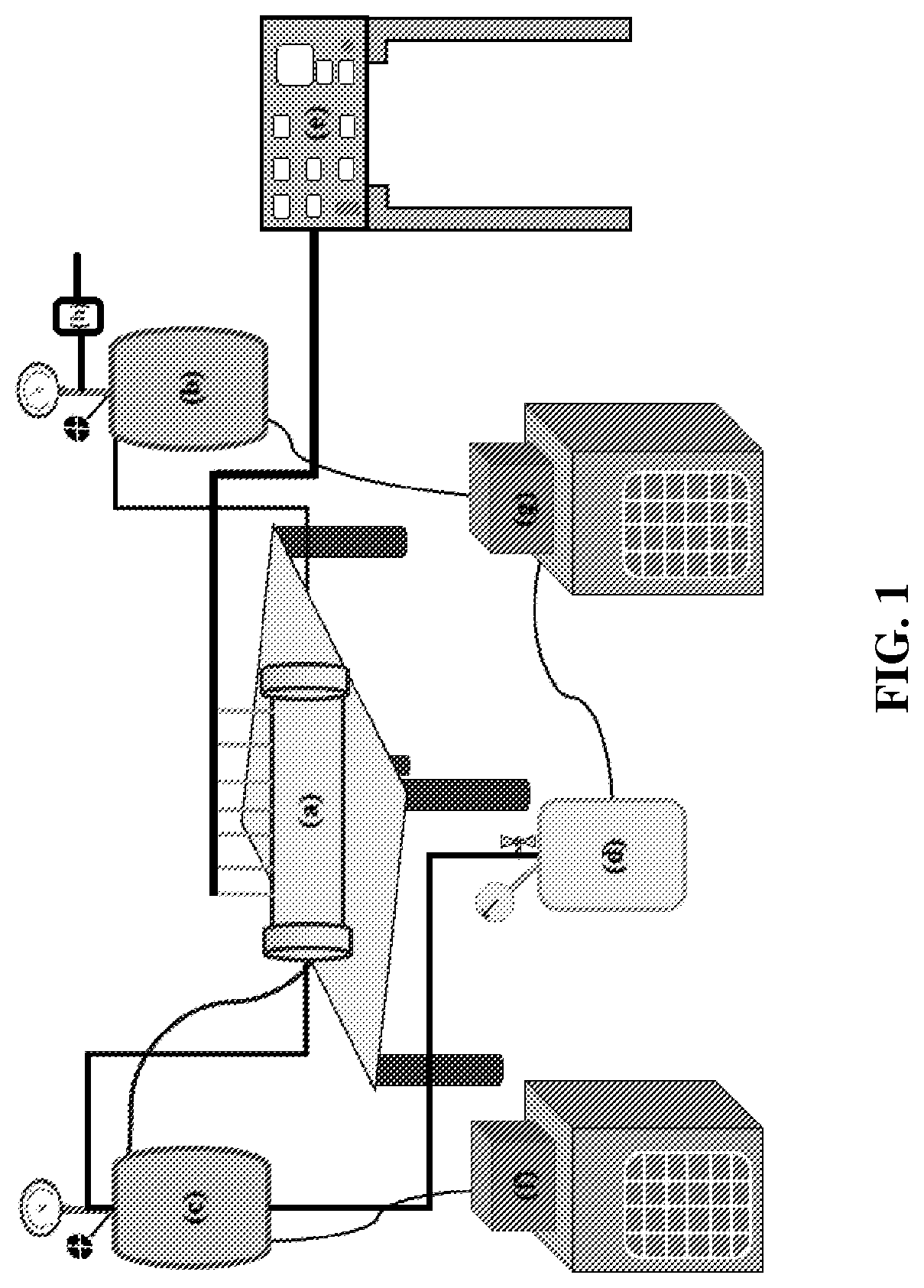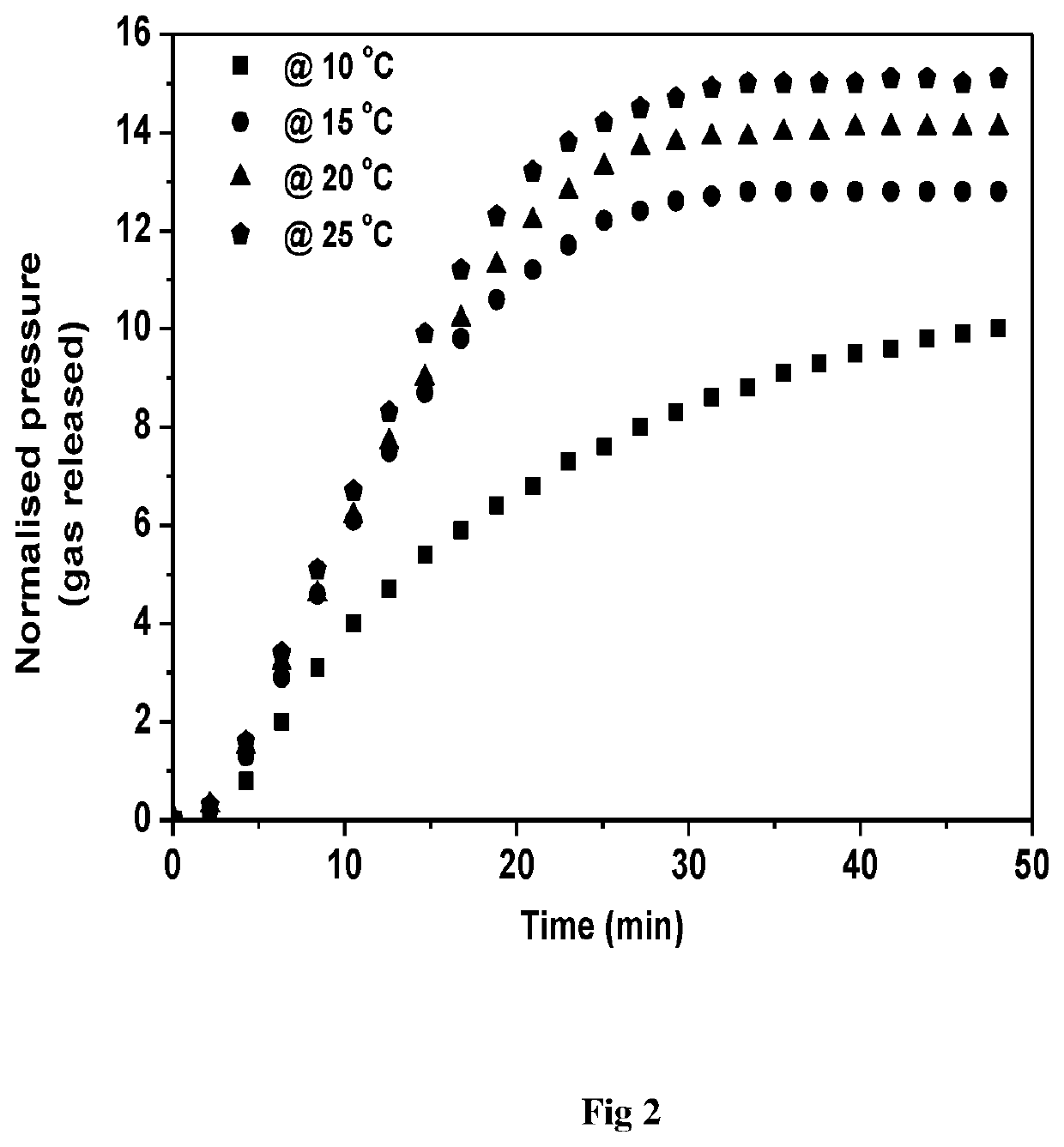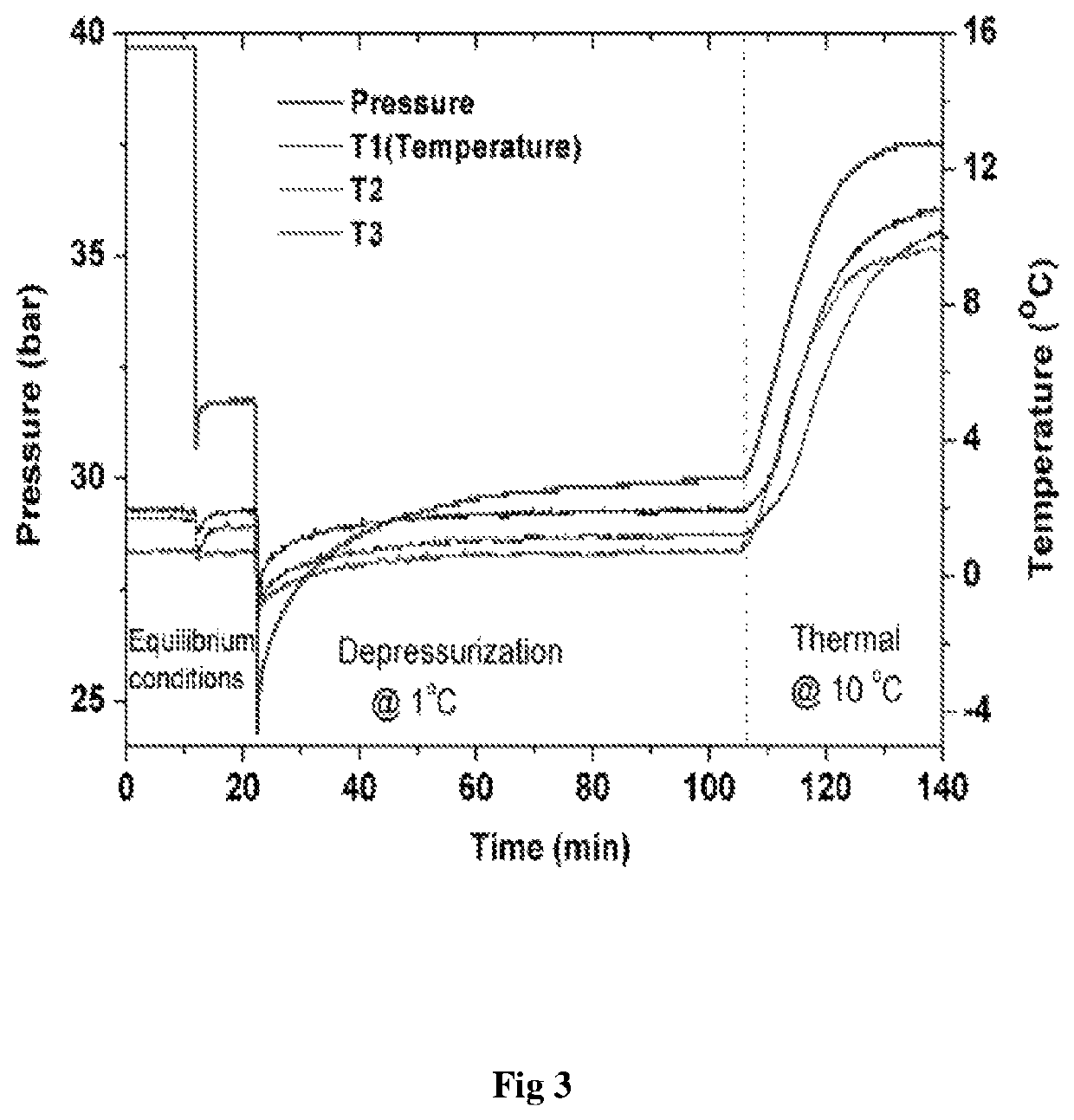Process for dissociation of hydrates in presence of additives or hydrate dissociation promoters
a technology of hydrate dissociation and promoter, which is applied in the direction of gaseous fuels, chemistry apparatus and processes, drilling compositions, etc., can solve the problems of high cost, difficult process, and little knowledge of the technology necessary to recover gas from gas hydrates, and the hydrate dissociation process is highly uneconomical and cumbersom
- Summary
- Abstract
- Description
- Claims
- Application Information
AI Technical Summary
Problems solved by technology
Method used
Image
Examples
example 1
Identification of Benign Additives Using the Dedicated Setup for Additive Selection
[0069]Experiments were carried out in a dedicated stirred tank reactor setup for additive selection. It has a volume of ˜252 ml and is equipped with 1 inch transparent windows (made up of submarine glass) on opposite ends of the vessel in order to observe the morphology of the hydrate formation and dissociation process. Photographic representations of the experimental setup are given in FIG. 1. All experiments were conducted at 274 K temperature and 5.0 MPa pressure using pure methane gas as the hydrate former. Methane hydrate dissociation is studied at two different temperatures, 283 K and 293 K using the thermal stimulation approach. It is observed that the presence of 1 wt % of the additives in the system not only considerably enhances dissociation kinetics as compared with pure water at 293 K but a number of the additives were able to achieve much faster kinetics even during dissociation at 283 K ...
example 2
Injection of Additives to Enhance Hydrate Dissociation Kinetics: Continuous Flow Loop Circulating Apparatus:
[0070]Representations of the continuous flow loop apparatus are shown as FIGS. 2 and 3. The additives were tested in a continuous manner utilizing the flow loop setup as shown below. This reactor simulates the subsea condition; which comprises the native subsea pressure and temperature conditions of up to 200 bar and ranging from −5 to 10° C. respectively and the hydrate bearing sediment present inside the sea composed mainly of silica sand and clay. Suitable arrangements has been made to synthetically form the hydrate at constant pressure and then study the decomposition kinetics by circulating additive laden sea water / fresh water for studying the effect of additives on decomposition kinetics. Set of eight thermocouples measures the temperature of the bed (which simulates the lithography of sea bed) during hydrate formation and decomposition process. The pressure of the setup...
example 3
Screening and Testing Using Molecular Dynamic (MD) Simulations
[0071]The additives are first screened and tested using molecular dynamic (MD) simulations. Based on results obtained from MD simulations are then validated experimentally to identify the best candidates to enhance hydrate dissociation kinetics. Phospholipid nanoparticles (liposomes) are synthesized which are then either to be used individually or to be coated with the additives selected through quantum mechanical calculation followed by MD simulation and experimentation. A stirred tank reactor is used to carry out the experiments using the phospholipid nanoparticles suspended in water to test their efficacy as hydrate dissociation promoters. Experiments is carried out both with the hydrates initially present in the system and injection of phospholipid nanoparticles into the system so as to facilitate the dissociation of hydrates and with the formation of hydrates in presence of phospholipid nanoparticles followed by diss...
PUM
| Property | Measurement | Unit |
|---|---|---|
| temperature | aaaaa | aaaaa |
| temperatures | aaaaa | aaaaa |
| temperature | aaaaa | aaaaa |
Abstract
Description
Claims
Application Information
 Login to View More
Login to View More - R&D
- Intellectual Property
- Life Sciences
- Materials
- Tech Scout
- Unparalleled Data Quality
- Higher Quality Content
- 60% Fewer Hallucinations
Browse by: Latest US Patents, China's latest patents, Technical Efficacy Thesaurus, Application Domain, Technology Topic, Popular Technical Reports.
© 2025 PatSnap. All rights reserved.Legal|Privacy policy|Modern Slavery Act Transparency Statement|Sitemap|About US| Contact US: help@patsnap.com



